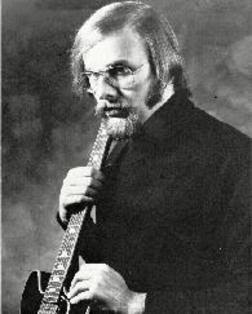
Artist Rex Rubenzer drew this caricature
of music columnist Steve Seymour for a book cover.
By STEVE SEYMOUR
I couldn't have guessed how receptive readers would be when Escanaba Daily Press editor Rick Rudden invited me to write a weekly column's for the newspaper's "That's Entertainment" section in July, 2005. It soon evolved into my blog, Rock n Roll Graffiti.
Like me, Rudden was a graduate of Central Michigan University in Mount Pleasant. We had known each other from the time I worked at the Daily Press while Rudden was a student. He figured a column would be a chance to combine my fondness for writing with my love of music.
In fact, rock 'n' roll music grabbed my attention as a teenager about the same time I become interested in journalism. I worked on a number of high school and college newspapers and magazines.
By the time Rudden and I talked about a column, 25 years had passed since my time in the local newspaper's editorial department.
Beyond that I'd worked in public relations for the Upper Peninsula Commission for Area Progress before opening the Record Rack with my wife Sue in 1985.
From the beginning my column took a nostalgic look at Michigan's stars, local musicians and beloved international rock legends, all from a personal, Upper Peninsula perspective. Early columns dealt with the Woodtick Music Festival, Ted Nugent's show at the U. P. State Fair and the passing of local bluesman Jim "Smiley" Lewis.
The first person to comment on my debut column was Escanaba musician and raconteur Mike Bastian. He struck up a conversation with me about the Nitty Gritty Dirt Band and we've been friends until he died in 2014.
In the summer of 2007, fellow Escanaba High School graduate Tim Mulvaney suggested I compile my columns into a book.
"Rock 'n' Roll Graffiti" was published that fall, with the help of my niece Jackie Hughes who provided the computer expertise the project required.
The book was printed by Instant Publisher, the short-run publishing division of Funcraft Publishing Co., based in Collierville, Tenn.
The blog contains the complete series, including over 200 columns not in the book, and can be accessed at any time by computer. Over the years, the blog site was received over 231,000 hits and hundreds of emails.
One surprising email came from Cheryl Brewster of Tennessee in response to a column I published in early 2009 titled "Cars, engines inspire recordings. " The story mentioned my Grand-Uncle Johnny Seymour who drove in the Indianapolis 500 six times, after racing Indian motorcycles in the 1910s and 1920s. Ms. Brewster informed me that Uncle Johnny was her grandfather and that her family had been searching for relatives for years.
With over 300 installments over six years, I covered a lot of material including a considerable amount of original research. I'm most proud of presenting information about the thriving garage band scene based in the U. P. during the 1960s, not previously acknowledged. Although Michigan's rock 'n' roll history concentrates on the southeastern part of the state, groups from north of the Mackinac Bridge issued a number of strong 45 rpm singles and generated considerable fan interest.
In addition to writing about bands from the U. P., I have attempted to collect and preserve their vinyl recordings. Most of the music originated from rare 1960s era 45 rpm singles issued on small independent labels.
The U. P. has an outstanding musical heritage and we have every right to be proud of it. I know I am.
Editor's note: This column was originally published June 8, 2011 and is newly revised.
###









































